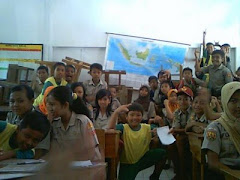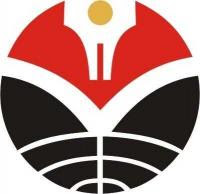Wawan Nurwana & Arip Nurahman
Indonesia University of Education
SDN 3 Bangunharja Menuju Sekolah Dasar International 2010
Education encompasses both the teaching and learning of knowledge, proper conduct, and technical competency. It thus focuses on the cultivation of skills, trades or professions, as well as mental, moral & aesthetic development.[1]
Formal education consists of systematic instruction, teaching and training by professional teachers. This consists of the application of pedagogy and the development of curricula. In a liberal education tradition, teachers draw on many different disciplines for their lessons, including psychology, philosophy, information technology, linguistics, biology, and sociology. Teachers in specialized professions such as astrophysics, law, or zoology may teach only in a narrow area, usually as professors at institutions of higher learning. There is much specialist instruction in fields of trade for those who want specific skills, such as required to be a pilot, for example. Finally, there is an array of educational opportunity in the informal sphere- for this reason, society subsidizes institutions such as museums and libraries. Informal education also includes knowledge and skills learned and refined during the course of life, including education that comes from experience in practicing a profession.
The right to education is a fundamental human right. Since 1952, Article 2 of the first Protocol to the European Convention on Human Rights obliges all signatory parties to guarantee the right to education. At world level, the United Nations' International Covenant on Economic, Social and Cultural Rights of 1966 guarantees this right under its Article 13.
Contents
- 1 Systems of Formal Education
- 2 Process
- 3 History
- 4 Philosophy
- 5 Psychology
- 6 Economic implications of Education
- 7 Sociology of education
- 8 See also
- 9 References
- 10 External links
Systems of Formal Education
Education systems are established to provide education and training, in most cases for children and the young. A curriculum defines what students should know, understand and be able to do as the result of education. A teaching profession delivers teaching which enables learning, and a system of polices, regulations, examinations, structures and funding enables teachers to teach to the best of their abilities. Sometimes education systems can be used to promote doctrines or ideals as well as knowledge, which is known as social engineering. This can lead to political abuse of the system, particularly in totalitarian states and government. Education is a broad concept,it refers to all the experiences in which children can learn something. Instruction refers to the intentional facilitating of learning toward identified goals, delivered either by an instructor or other forms. Teaching refers to learning facilitated by a real live instructor. Training refers to learning toward preparing learners with specific knowledge, skills, or abilities that can be applied immediately.
Primary education
Primary (or elementary) education consists of the first years of formal, structured education. In general, primary education consists of six or seven years of schooling starting at the age of 5 or 6, although this varies between and sometimes within countries. Globally, around 70% of primary-age children are enrolled in primary education, and this proportion is rising.[2]. Under the Education for All programs driven by UNESCO, most countries have committed to achieving universal enrollment in primary education by 2015, and in many countries, it is compulsory for children to receive primary education. The division between primary and secondary education is somewhat arbitrary, but it generally occurs at about eleven or twelve years of age. Some education systems have separate middle schools with the transition to the final stage of secondary education taking place at around the age of fourteen. Mostly schools, which provide primary education, are referred to as primary schools. Primary schools in these countries are often subdivided into infant schools and junior schools.
Secondary education
In most contemporary educational systems of the world, secondary education consists of the second years of formal education that occur during adolescence.[citation needed] It is characterised by transition from the typically compulsory, comprehensive primary education for minors to the optional, selective tertiary, "post-secondary", or "higher" education (e.g., university, vocational school) for adults.[citation needed] Depending on the system, schools for this period or a part of it may be called secondary or high schools, gymnasiums, lyceums, middle schools, colleges, or vocational schools. The exact meaning of any of these varies between the systems. The exact boundary between primary and secondary education varies from country to country and even within them, but is generally around the seventh to the tenth year of schooling. Secondary education occurs mainly during the teenage years. In the United States and Canada primary and secondary education together are sometimes referred to as K-12 education, and in New Zealand Year 1-13 is used. The purpose of secondary education can be to give common knowledge, to prepare for higher education or to train directly in a profession.
Higher education
Higher education, also called tertiary, third stage or post secondary education, is the non-compulsory educational level following the completion of a school providing a secondary education, such as a high school, secondary school, or gymnasium[citation needed]. Tertiary education is normally taken to include undergraduate and postgraduate education, as well as vocational education and training. Colleges and universities are the main institutions that provide tertiary education. Collectively, these are sometimes known as tertiary institutions.Tertiary education generally results in the receipt of certificates, diplomas, or academic degrees.
Sources:
Wikipedia











Tidak ada komentar:
Posting Komentar